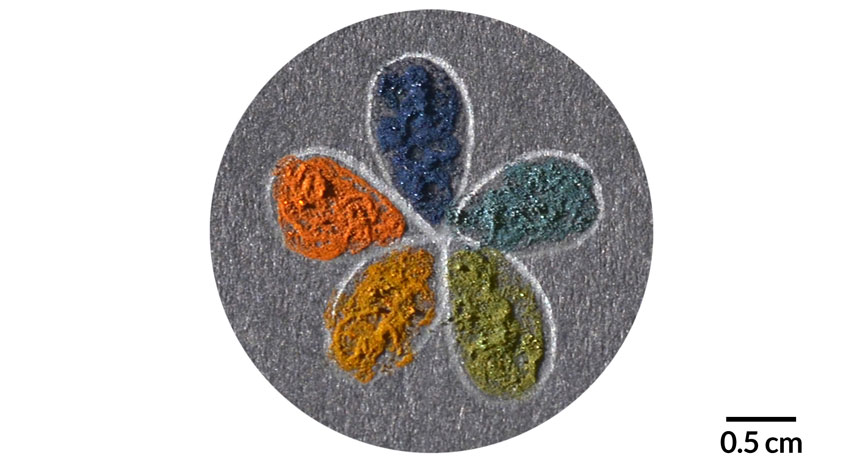Tiny ‘supraballs’ put a new spin on creating long-lasting color

Tiny balls of melanin could someday paint the rainbow. They’re one of the key ingredients in a new way to craft a spectrum of structural colors — hues created when light interacts with special nanostructures.
Structural colors are a longer-lasting alternative to chemical pigments, which lose all pizazz when they break down. Examples of durable hues abound in nature. For instance, many bird feathers and butterfly wings get their brilliant colors in part from nanoscale texturing (SN: 6/11/16, p. 32). But finding a simple way to generate these complex structural colors — a technique that can be scaled up and used to create many different hues — has been a tricky task.
In the new study, researchers made nano-sized balls of melanin aggregate into clusters called supraballs. Melanin, the pigment that darkens skin, appears black in the individual nanoparticles. But altering the spacing of the nanoparticles in the ball affects how the particles scatter light, generating a spectrum of structural colors, says study coauthor Ali Dhinojwala, a polymer scientist at the University of Akron in Ohio. So he and colleagues added a thin silica coating to the outside of the melanin nanoparticles. The coating acts like a bumper, limiting how close the particles can pack together.
Varying the diameter of the melanin core and the thickness of the silica shell creates supraballs in a range of colors, including olive, orange-red and navy blue, the researchers report September 15 in Science Advances.
This recipe is simpler than other ways of making structural colors in the lab, Dhinojwala says. The nanoparticles cluster into supraballs at room temperature in a mixture of water and an alcohol called octanol, and are easy to extract as a powder. Plus, nanoparticles with different dimensions can be mixed in one supraball to create any shade imaginable.